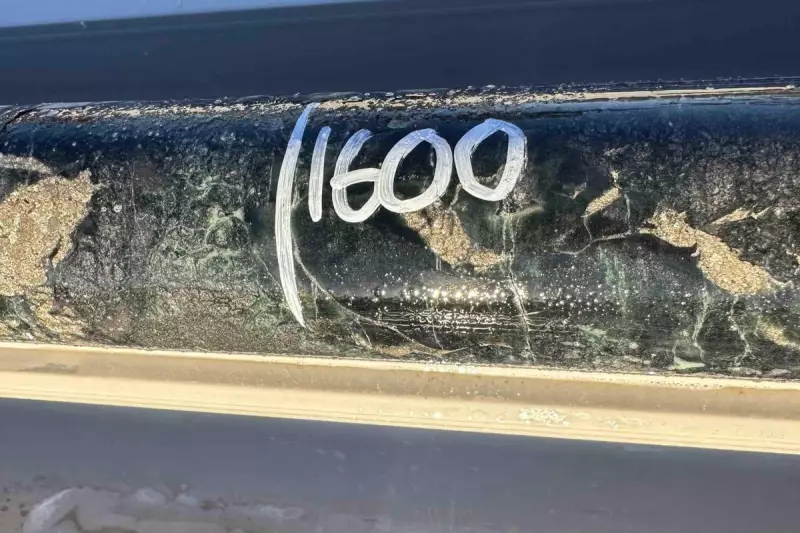
Major Nickel Intercepts Boost WA Mining Project
Western Mines Group is accelerating exploration at its flagship Mulga Tank project in Western Australia's Eastern Goldfields, with the company completing more than half of its phase-four reverse-circulation (RC) drilling program. The campaign has yielded exceptional results, including one remarkable 269-metre mineralised intersection grading 0.33 per cent nickel, 144 parts per million (ppm) cobalt and 215ppm copper from just 61 metres depth.
Diamond Tails Test Komatiite Potential
Following these promising RC results, the company has initiated a series of diamond tail holes to thoroughly test the komatiite system and basal zone along the western margin of the complex. In late October, Western Mines revealed it had intercepted high-grade sulphide segregations at depth from one hole at the project, located on the Minigwal Greenstone Belt.
The diamond-tail hole examining the basal zone uncovered multiple zones of semi-massive sulphide textures, with logged core indicating nickel-rich mineralisation extends well below the main disseminated envelope. The company plans comprehensive petrological work to determine mineral assemblages and grade distribution across all intercepts before releasing full assays.
Management believes these findings represent a positive step toward potentially outlining a globally significant komatiite-hosted nickel system.
Exploration Incentive Drives Ambitious Program
Western Mines is now targeting its Panhandle komatiite system with a diamond-tail hole focusing on the stratigraphy. This work is partially funded by the Exploration Incentive Scheme (EIS), which has contributed $220,000 toward two diamond-tail holes already drilled. In total, the company has secured $620,000 in EIS grants to accelerate its upcoming drilling plans.
Additional drilling includes another diamond-tail to test an extension of a high-grade RC hole, followed by a downhole electromagnetic survey that indicates deeper potential. Another EIS-funded deep diamond-tail will further examine the basal zone at the complex, complemented by nine RC holes to infill the resource in the main body.
Three infill RC holes are planned between two zones of indicated resources, with six additional holes scheduled south of the resource. Mud-rotary holes are currently being drilled in preparation for RC drilling when ground conditions improve.
Western Mines Group managing director Dr Caedmon Marriott stated: "We have ten holes we hope to drill between now and Christmas, including an EIS co-funded deep diamond hole and we're already starting to plan our activities for next year. The co-funded EIS deep diamond hole will look to further test the active basal zone of the Complex, searching for a sulphide enriched keel."
Substantial Resource Base Building
The initial four RC holes focused on stepping out south of previous drilling outside known mineralisation. Results indicate the project shares similarities with BHP's Mount Keith-style disseminated sulphide system, suggesting substantial scale potential.
Assays from the three remaining holes supported the first hole's outstanding interval with additional long mineralised intersections. The second hole returned 243 metres at 0.26 per cent nickel, 128ppm cobalt, 67ppm copper and 15ppb PGE from 82 metres depth.
A third hole delivered cumulative hits of 171 metres at 0.27 per cent nickel, 119ppm cobalt, 50ppm copper and 18ppb PGE in two separate sections from 106 metres depth along a 227-metre stretch. The fourth hole similarly returned a cumulative 147 metres grading 0.27 per cent nickel, 126ppm cobalt, 27ppm copper and 19ppb PGE from four separate intervals between 84 metres and 294 metres depth.
The first hole's 1:1 sulphide to nickel ratio provides a strong geochemical indicator confirming active magmatic sulphide processes and the signature of nickel sulphide mineralisation.
The company has steadily built a substantial resource base at Mulga Tank, now containing 5.3 million tonnes of nickel, 257,000 tonnes of cobalt, 161,000 tonnes of copper and 1.1 million ounces of platinum group elements.
The globally significant resource includes an indicated category of 565 million tonnes grading 0.28 per cent nickel, 134ppm cobalt, 104ppm copper and 18ppb platinum and palladium.
The recent RC program identified 25 intersections exceeding 1 per cent nickel across approximately 2 square kilometres in the core of the main ultramafic complex. These results primarily occurred within the top 300 vertical metres from surface, suggesting potential for open-pit mining operations.
With its expanding critical minerals inventory, Western Mines is positioning itself as a potential long-term supplier of multiple valuable critical minerals increasingly sought by Western nations.





